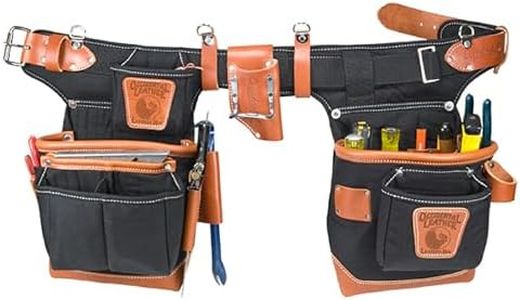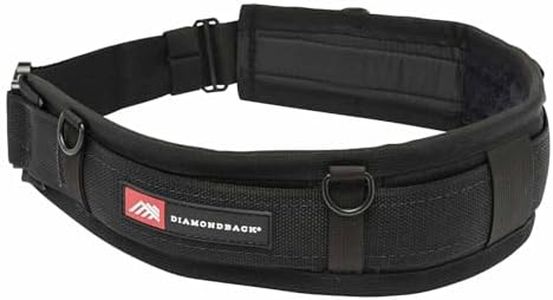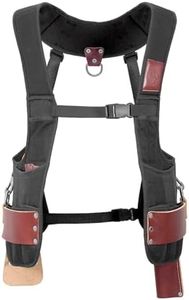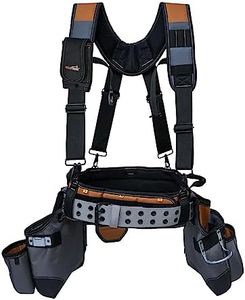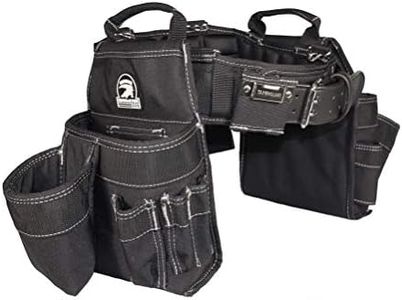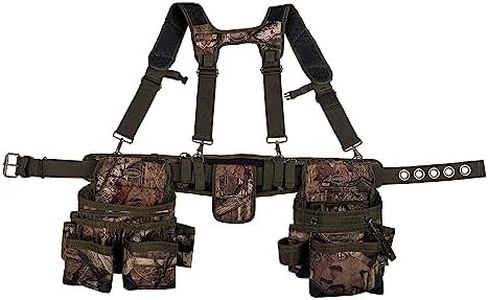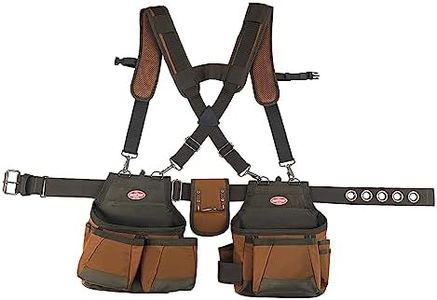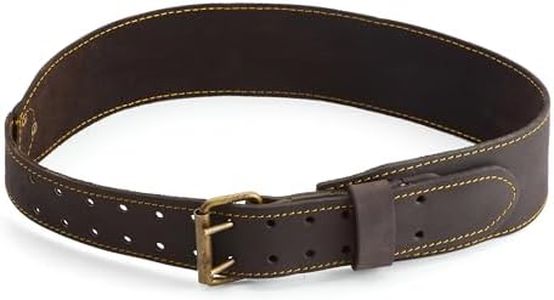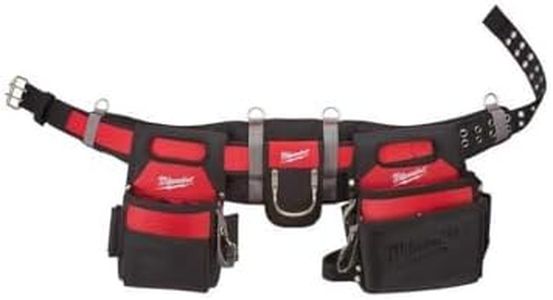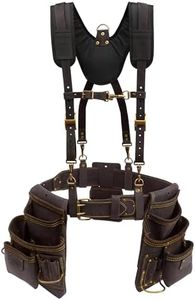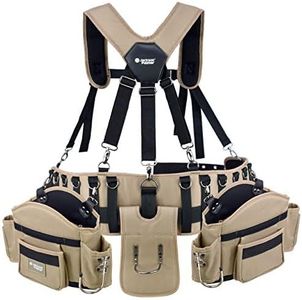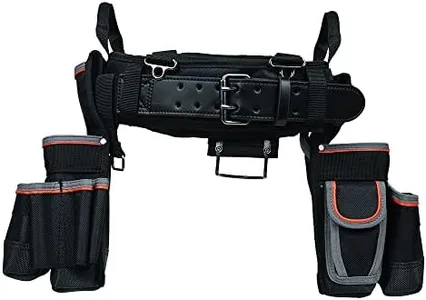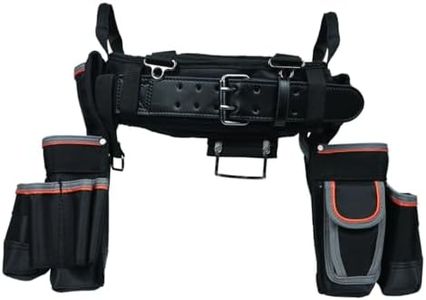We Use CookiesWe use cookies to enhance the security, performance,
functionality and for analytical and promotional activities. By continuing to browse this site you
are agreeing to our privacy policy
10 Best Electrician Tool Belts
From leading brands and best sellers available on the web.By clicking on a link to a third party's website, log data is shared with that third party.
Buying Guide for the Best Electrician Tool Belts
Choosing the right electrician tool belt is essential for comfort, productivity, and safety on the job. Since electricians need quick access to various tools while working in different positions, a well-suited tool belt makes a big difference. The best approach is to consider how much you need to carry, how often you'll wear the belt, and your personal comfort preferences, such as fit and weight distribution.MaterialMaterial refers to what the tool belt is made of, often leather, nylon, or polyester. This matters because it impacts durability, comfort, and weight. Leather is known for its toughness and long lifespan, making it suitable for heavy use, though it is heavier. Nylon and polyester are lighter, more breathable, and might be more comfortable for all-day wear, though they may not last as long in tough conditions. If you expect daily, rugged use, leather might be a good choice. If you prefer something lighter or will wear it occasionally, a sturdy nylon belt may serve you well.
Number and Type of PocketsThe arrangement and number of pockets dictate how many tools and supplies you can carry and how organized you can be. Some belts offer only a few large pouches, while others feature many smaller pockets targeted for specific tools. If you carry many screwdrivers, pliers, and testers, a belt with lots of pockets will keep you organized and minimize fumbling. If your job uses just a few main tools, a simpler design with big pockets may suffice and be less bulky. Think about your daily tool needs to pick a layout that matches them.
Fit and AdjustabilityFit and adjustability refer to how well the belt can be adapted to your body size and shape. This is important for comfort, as a poorly fitting belt can cause soreness or even injury over time. Some belts are available in specific sizes, while others adjust using buckles or Velcro. If you’ll be wearing the belt over thick clothing or need to share it with others, opt for a highly adjustable design. Make sure the belt sits comfortably on your hips without riding up or digging in.
Weight Distribution and SupportWeight distribution and support refers to how the belt spreads the load of your tools around your body. Some belts have padded back support or suspenders to take pressure off your hips and lower back. This matters especially if you carry heavy tools or wear your belt for extended periods. For lighter loads, a standard belt might be fine. If you often experience back or hip fatigue, consider a model with better padding or built-in suspenders.
Attachment Points and LoopsAttachment points and loops are designed for specific items like hammers, tape measures, or drills. Their placement and strength are important because you want to be able to grab your tools quickly without them falling off. If you use a lot of large or specialized tools, check for reinforced loops and holders designed for those items. Think about which tools you always need within easy reach, and make sure the belt accommodates them.
Accessibility and LayoutAccessibility and layout refer to how easy it is to reach your tools while working. Tools should be easy to grab with either hand without much shifting or searching. Some belts have customizable pouches and pockets, allowing you to organize tools in a way that works for you. If you frequently work in tight spaces or on ladders, having a well-organized and easy-to-access tool belt can help you work faster and safer.
